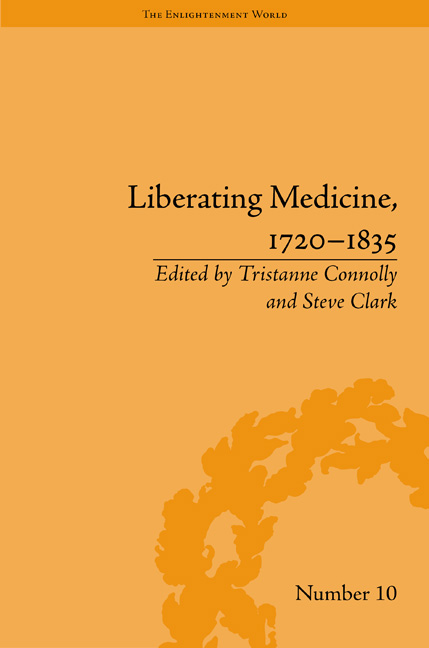Book contents
- Frontmatter
- CONTENTS
- Acknowledgements
- Contributors
- List of Figures
- Introduction
- I Spiritual Sickness and Hypochondria
- II Health and Emancipation
- 4 Due Preparations: Defoe, Dr. Mead, and the Threat of Plague
- 5 An Organic Body Politic: Wollstonecraft's Historical and Moral view of the Origin and Progress of the French Revolution and John Brown's Idea of Health
- 6 Blake, Liberation and Medicine
- 7 Untying the Web of Urizen: William Blake, Nervous Medicine, and the Culture of Feeling
- III Madness
- IV Anatomized and Aestheticized Bodies
- V Birth
- Notes
- Works Cited
- Index
7 - Untying the Web of Urizen: William Blake, Nervous Medicine, and the Culture of Feeling
from II - Health and Emancipation
- Frontmatter
- CONTENTS
- Acknowledgements
- Contributors
- List of Figures
- Introduction
- I Spiritual Sickness and Hypochondria
- II Health and Emancipation
- 4 Due Preparations: Defoe, Dr. Mead, and the Threat of Plague
- 5 An Organic Body Politic: Wollstonecraft's Historical and Moral view of the Origin and Progress of the French Revolution and John Brown's Idea of Health
- 6 Blake, Liberation and Medicine
- 7 Untying the Web of Urizen: William Blake, Nervous Medicine, and the Culture of Feeling
- III Madness
- IV Anatomized and Aestheticized Bodies
- V Birth
- Notes
- Works Cited
- Index
Summary
Focusing on the complex figure of Urizen, one of Blake's Four Zoas, and that of the web that he spins, I explore in this essay how Blake intertwines into this representation the idea and metaphor of the web that Enlightenment medical theories of the nerves created. In so doing, I shall show the ways that the web of Urizen is involved in the cultural formation of sympathy, for Enlightenment nerve physiology intersects with the cultural discourse of sympathy, sensibility, and feeling. However cold he may be, Urizen undoubtedly possesses qualities pertinent to a man of feeling. To rethink the image of Urizen in such terms would, therefore, lead to his liberation from the hitherto hegemonic understanding of him as the epitome of Enlightenment cold reason and rationality – the name of Urizen has customarily been glossed as a pun on ‘Your Reason’ and ‘Horizon’, that is, ‘the limit on perception imposed by Your Reason’. Although the figure of Urizen has been recently reassessed more positively in the framework of Lockean epistemology and David Hartley's Newtonian neurophysiology, these studies have failed to grasp the more extensive relation of Urizen to the interlocking ideas and metaphors relating to the nerve, the fibre, the brain and the web that Enlightenment medicine fermented. I shall show in what follows that the image of Urizen regarding his ‘Web’ is woven with eighteenth-century medical discourse as a warp and with the cultural discourse of sympathy (feeling) as a woof.
The topic that I treat here constitutes a part of a larger project on Blake and eighteenth-century medicine, focusing on Blake and what I call ‘fibre medicine’. This part of the argument has already been published in my article in Literature and Medicine, in which I argued that Blake's sustained engagement with the fibre and the fibre-woven body demonstrates his deep indebtedness to Enlightenment fibre medicine – that is, the medical discourse based on the idea of the fibre and fibre theory.
- Type
- Chapter
- Information
- Liberating Medicine, 1720–1835 , pp. 97 - 108Publisher: Pickering & ChattoFirst published in: 2014



